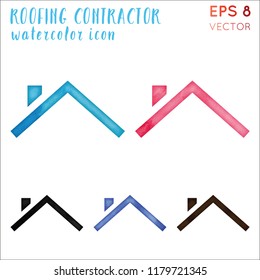Painting Dos And Do N'ts: Typical Blunders To Stay Clear Of
Painting Dos And Do N'ts: Typical Blunders To Stay Clear Of
Blog Article
Material Author-Bailey Bartlett
Ensuring a flawless paint task entails greater than simply getting a brush. From surface prep work to application strategies, there prevail mistakes that can prevent the end result of your painting job. By understanding the dos and do n'ts, you can raise your outcomes and attain an expert surface. Allow's check out several of the vital blunders to stay away from when taking on your following paint endeavor.
Appropriate Surface Prep Work
Extensively preparing the surface area before painting is important to make certain a smooth and long-lasting finish. Proper surface preparation is the foundation for a successful paint task.
Begin by cleansing the surface area to eliminate dust, grease, and various other pollutants that can impact the paint's attachment. Utilize painter and water option, adhered to by rinsing and enabling enough drying out time.
Next off, examine the surface for any kind of fractures, holes, or blemishes. Fill these with a suitable filler and sand them down till smooth.
After repair services, it is crucial to prime the surface. Guide helps the paint adhere much better, enhances shade uniformity, and gives added security. Choose a guide appropriate for the surface material and the sort of paint you'll be making use of. Allow the guide to dry totally before applying the paint.
Last but not least, think about fining sand the keyed surface lightly to ensure a perfectly smooth base for the paint application.
Picking the Right Paint
Reliable selection of the ideal paint is vital for accomplishing a successful and long-lasting paint job. When picking the ideal paint, take into consideration aspects such as the surface to be painted, the area's feature, and the preferred surface.
For interior painting, latex paints are often chosen due to their resilience, simple clean-up, and low smell. On the other hand, oil-based paints are much better suited for high-moisture areas like kitchens and bathrooms.
Picking the correct surface is also important. Flat paints are optimal for ceilings and wall surfaces with blemishes, as they hide imperfections well. Satin and eggshell finishes offer a small luster and are less complicated to clean, making them ideal for high-traffic locations.
For outside paint, acrylic paints are generally used for their weather condition resistance and versatility.
Additionally, bear in mind the paint shade and its effect on the room. read what he said can make a space feel even more large, while darker shades include comfort. Constantly check a tiny location before dedicating to a shade to ensure it complements the area's illumination and decoration.
Application Strategies
When it comes to paint, understanding proper application strategies is necessary for accomplishing a smooth and professional coating. One essential strategy is to make sure that the surface area to be repainted is clean and correctly prepared. This entails fining sand harsh areas, filling in openings or fractures, and applying primer if necessary.
Using the right tools is likewise critical. Quality brushes and rollers can make a substantial difference in the last result. When utilizing a brush, apply paint in smooth, also strokes in the direction of the timber grain or in lengthy vertical strokes for wall surfaces. For rollers, operate in convenient areas and roll in a zig-zag pattern to avoid noticeable roller marks.
Preserving a damp edge is another vital method to avoid lap marks. This means maintaining a wet side of paint as you function to blend each brand-new area effortlessly with the previous one. Additionally, when applying multiple layers, guarantee each layer is completely completely dry prior to applying the alongside stop peeling or cracking.
Grasping these application methods will help you attain professional-looking results in your painting tasks.
Conclusion
In conclusion, avoiding typical paint blunders is crucial for attaining a professional finish. Skipping surface prep work, using the incorrect kind of paint, and hurrying the application process can all negatively effect the outcome of your project.
By adhering to appropriate strategies and taking the time to prepare, choose the right paint, and use it correctly, you can make sure an effective painting project with enduring results.
